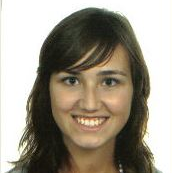Oral Health, Dental Practice and COVID-19
A special issue of International Journal of Environmental Research and Public Health (ISSN 1660-4601). This special issue belongs to the section "Oral Health".
Deadline for manuscript submissions: closed (31 May 2023) | Viewed by 26269
Special Issue Editor
Special Issue Information
Dear Colleagues,
The COVID-19 pandemic has been a challenge in different contexts, including oral health. On the one hand, dentists and other professionals related to oral health have experienced fast changes in their practices, with transmission of COVID-19 in dental clinics or infection control and measures being some of the concerns they face, potentially resulting in clinical and emotional consequences.
On the other hand, patients have also faced new challenges, for example, oral manifestations and/or sequelae of COVID-19 or a deterioration of their oral health due to the use of face masks and possible changes in the oral microbiota. Fear of going to the dentist could also be present and lead to delays in diagnoses and treatment of diseases of the oral cavity.
This Special Issue aims to identify the implications of COVID-19 in the different scopes of oral health as a first step to the development of preventive strategies.
Dr. Rocío Barrios Rodríguez
Guest Editor
Manuscript Submission Information
Manuscripts should be submitted online at www.mdpi.com by registering and logging in to this website. Once you are registered, click here to go to the submission form. Manuscripts can be submitted until the deadline. All submissions that pass pre-check are peer-reviewed. Accepted papers will be published continuously in the journal (as soon as accepted) and will be listed together on the special issue website. Research articles, review articles as well as short communications are invited. For planned papers, a title and short abstract (about 100 words) can be sent to the Editorial Office for announcement on this website.
Submitted manuscripts should not have been published previously, nor be under consideration for publication elsewhere (except conference proceedings papers). All manuscripts are thoroughly refereed through a single-blind peer-review process. A guide for authors and other relevant information for submission of manuscripts is available on the Instructions for Authors page. International Journal of Environmental Research and Public Health is an international peer-reviewed open access monthly journal published by MDPI.
Please visit the Instructions for Authors page before submitting a manuscript. The Article Processing Charge (APC) for publication in this open access journal is 2500 CHF (Swiss Francs). Submitted papers should be well formatted and use good English. Authors may use MDPI's English editing service prior to publication or during author revisions.
Keywords
- oral health
- oral manifestations
- COVID-19
- dentistry
- fear
- psychosocial factors
Benefits of Publishing in a Special Issue
- Ease of navigation: Grouping papers by topic helps scholars navigate broad scope journals more efficiently.
- Greater discoverability: Special Issues support the reach and impact of scientific research. Articles in Special Issues are more discoverable and cited more frequently.
- Expansion of research network: Special Issues facilitate connections among authors, fostering scientific collaborations.
- External promotion: Articles in Special Issues are often promoted through the journal's social media, increasing their visibility.
- e-Book format: Special Issues with more than 10 articles can be published as dedicated e-books, ensuring wide and rapid dissemination.
Further information on MDPI's Special Issue polices can be found here.





